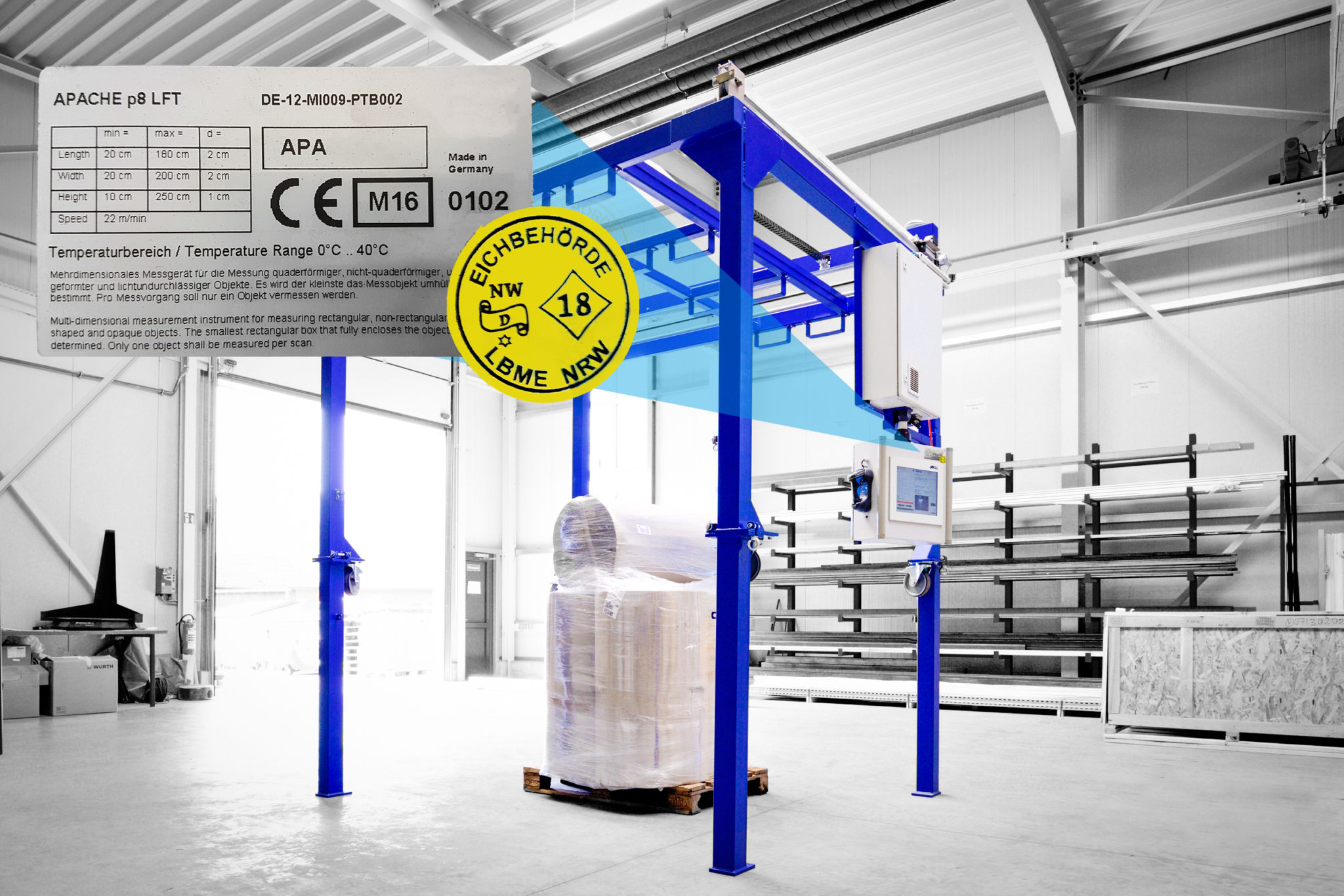With the rapidly increasing logistics volume, the measuring and recording of “logistical objects” is also increasingly coming into focus. Especially for the exact determination of length, width and height as well as for weighing, there are various multi-dimensional measuring solutions that appear very suitable at first glance. This does not exactly make the selection easy for the logistics manager, if he does not want to compare apples with oranges. For example, from an expert’s point of view, there are authoritative and legally relevant criteria, the non-observance of which when used in commercial transactions can lead to the decommissioning of the device and, as a result, to trouble with the supervisory authorities, fines and loss of reputation. “Just as a connected scale is subject to the German Measurement and Calibration Act (MessEG), this also applies to multidimensional measuring devices. Thus, we develop and offer 3-D measuring solutions (in official German, measuring devices for lengths and their combinations) that have been subjected to a type examination and initial assessment within the framework of the European Measuring Instruments Directive (MID),” explains Rüdiger Elben, Managing Director of AKL-tec, a system provider specializing in freight measurement. The conformity-assessed device, which is thus protected against manipulation by various security measures, enables the generation of legally relevant measurement results. For conformity assessment as a manufacturer, the quality management system is strictly monitored by a so-called conformity assessment body. In Germany, the recurring calibration is carried out by the market surveillance, which is the responsibility of the calibration offices of the federal states. Every two years, the systems are checked by a verification officer and found to be in good condition for further use in legal metrology.
It is fatal for operators if this has not taken place and the company lulls itself into deceptive security due to ignorance. “We recommend making sure that not only the certificate of conformity for the scale with the technical documentation is available, but also the one for the multidimensional measuring device,” Elben emphasizes, adding that both are subject to the German Measurement and Calibration Act (MessEG). “Nor can the legal requirement be overridden by any agreement. If the measurement results are used for remuneration purposes, the measuring instruments taken to help are subject to the calibration requirement. No ifs, no buts,” adds Marc Puhl, who is responsible at AKL-tec for matters relating to legal metrology. Innovative approaches, such as multi-zone systems or even systems in which the freight is measured on the moving industrial truck, enable process-compliant integration of systems that also comply with legal requirements. A closer look at the choice of technology can be of great importance in the field of freight measurement and avoid a lot of trouble with supervisory authorities.





